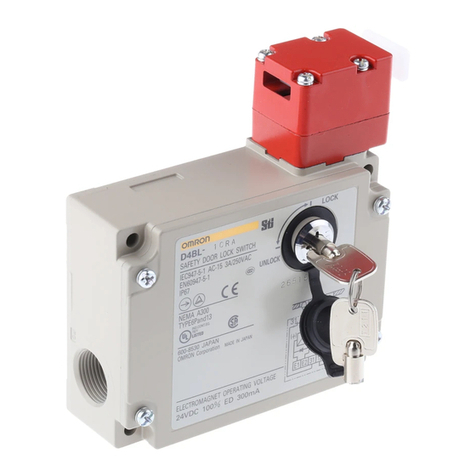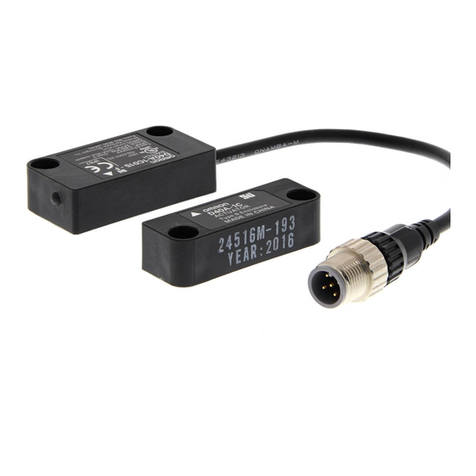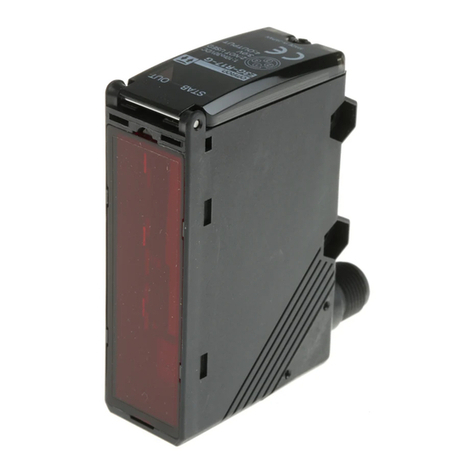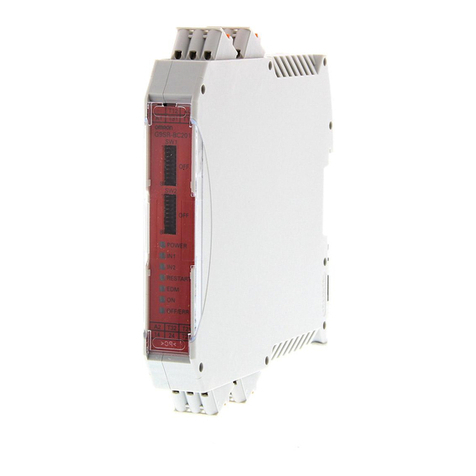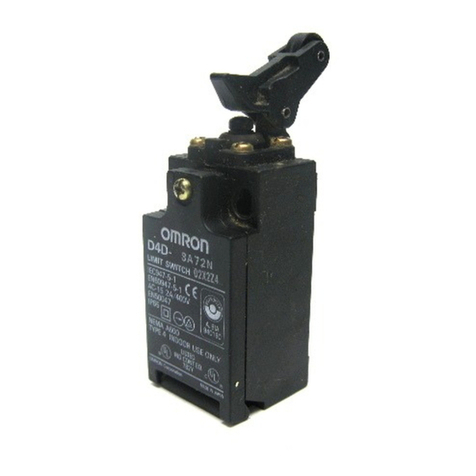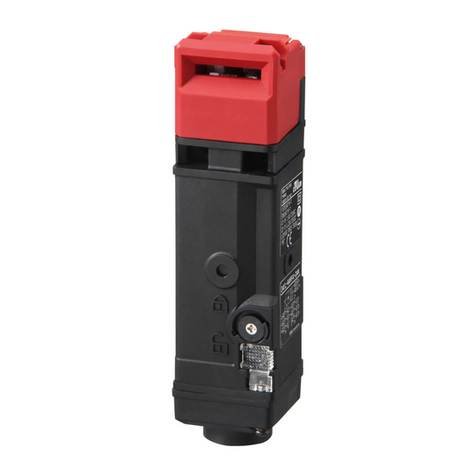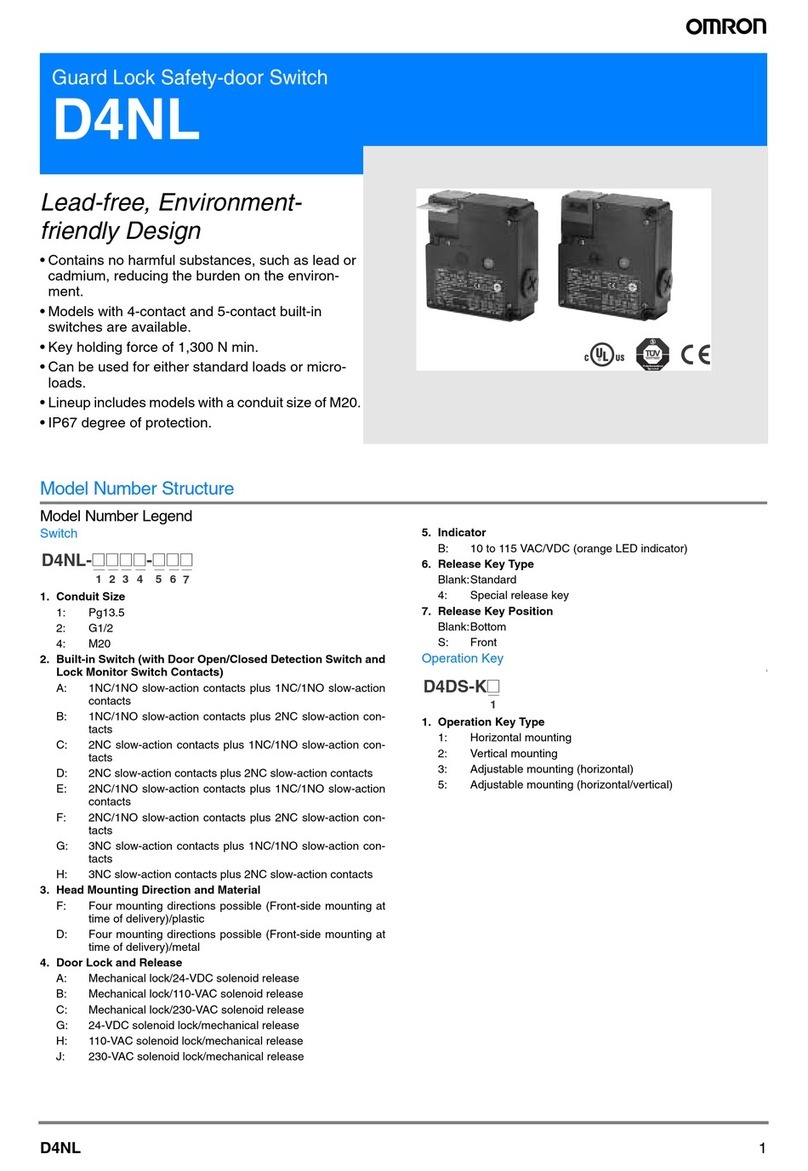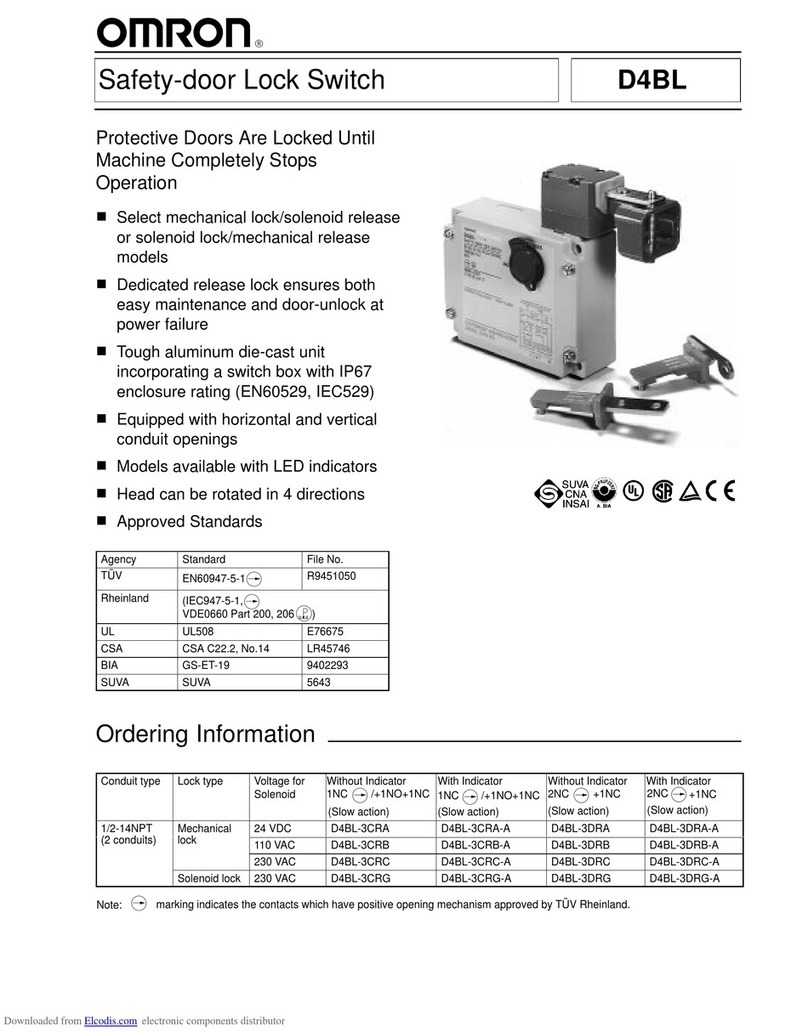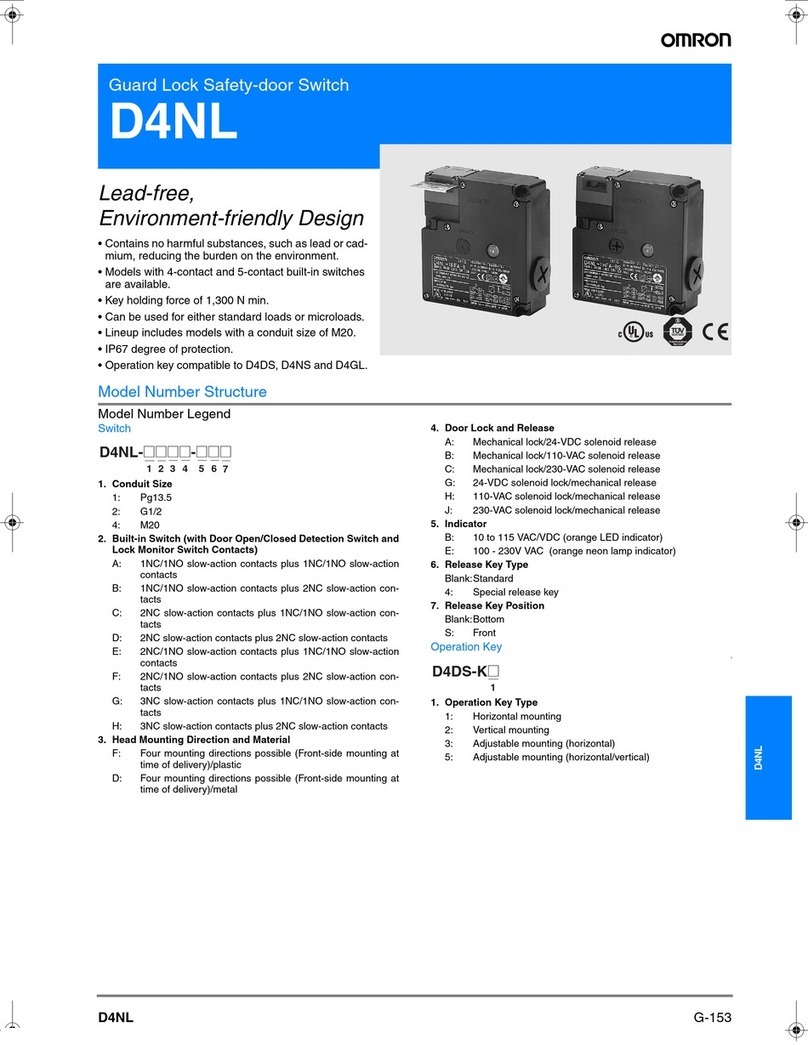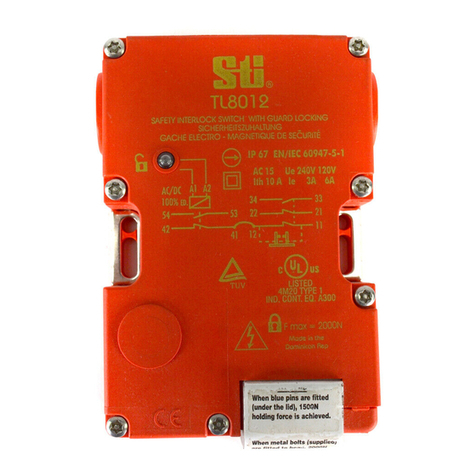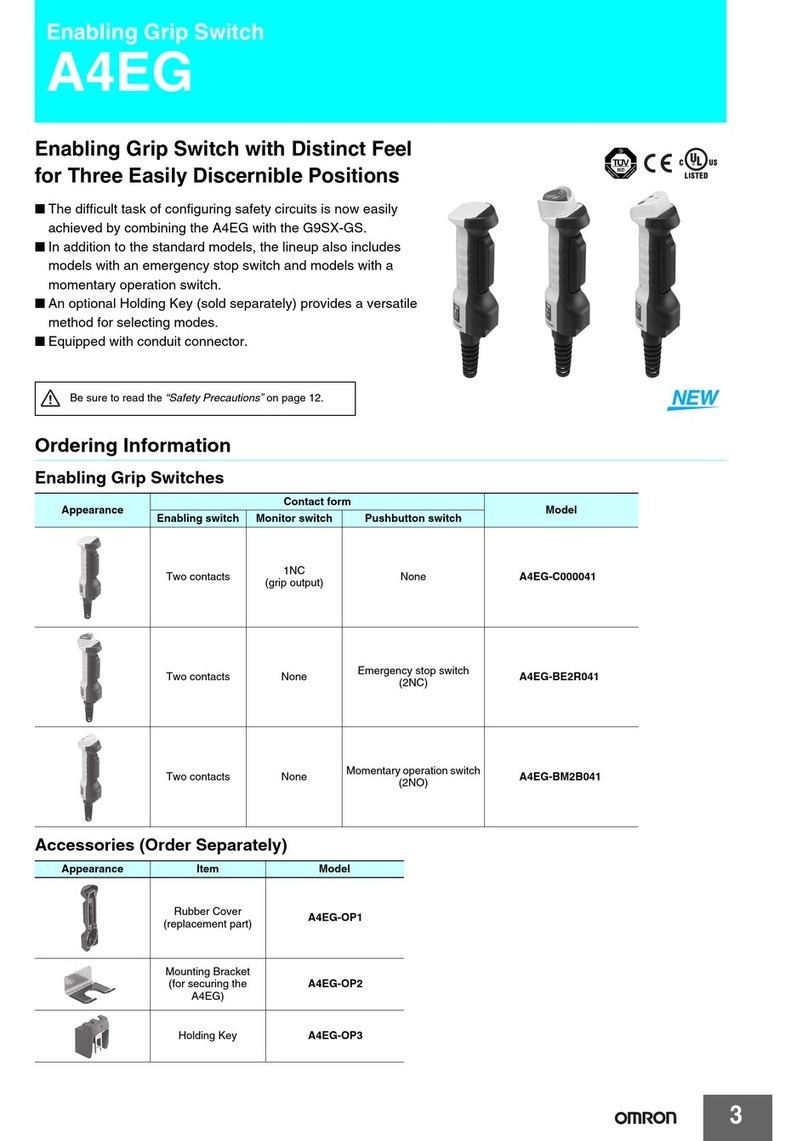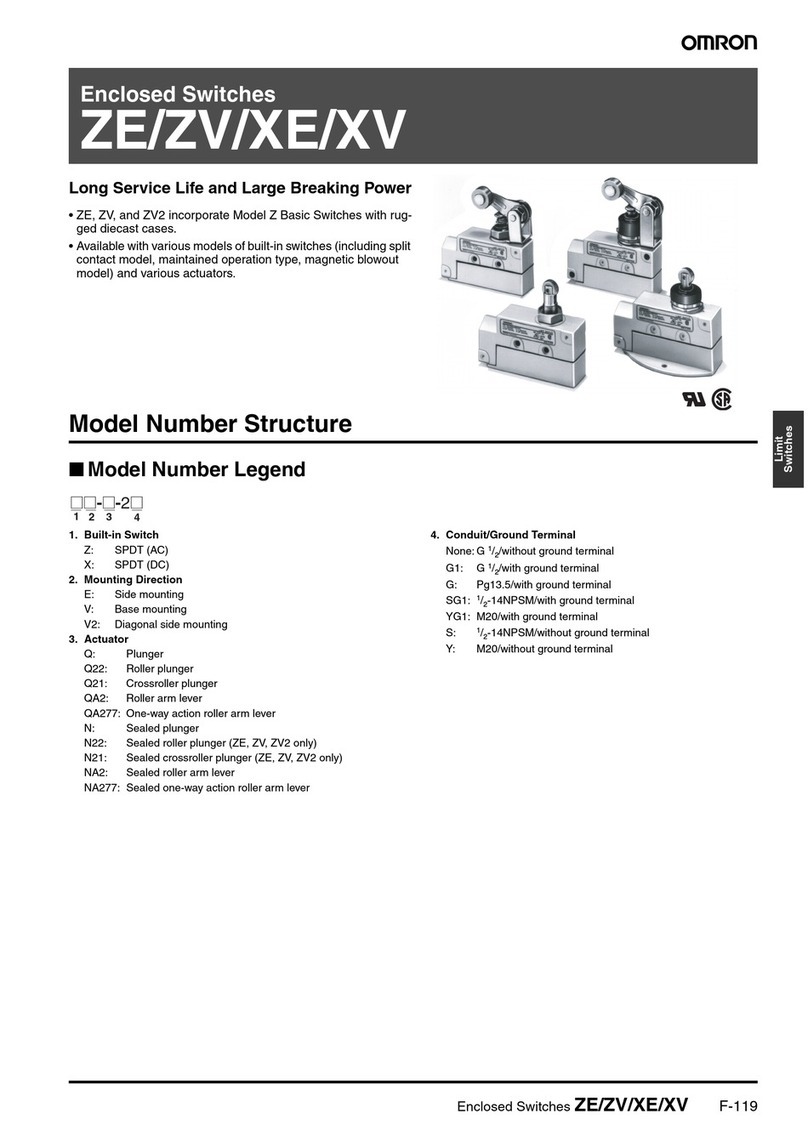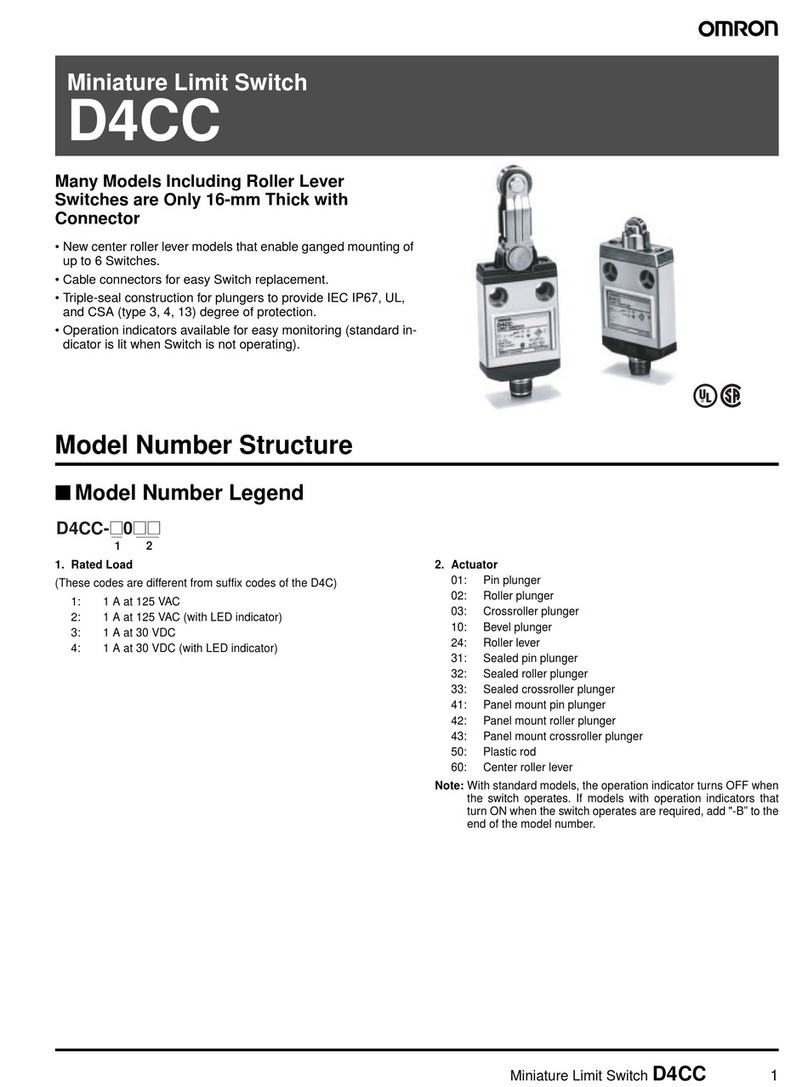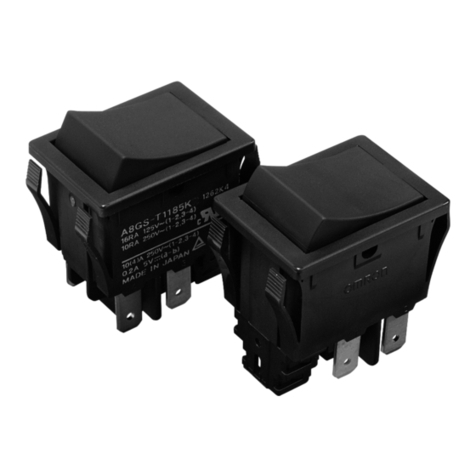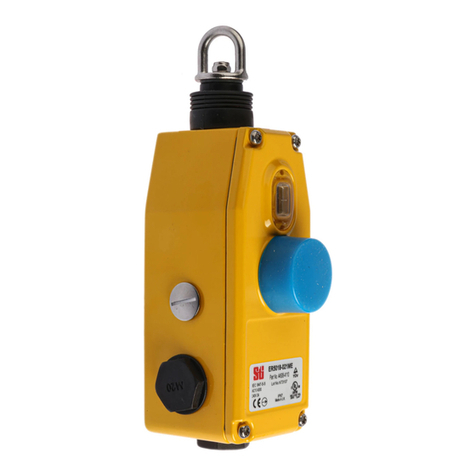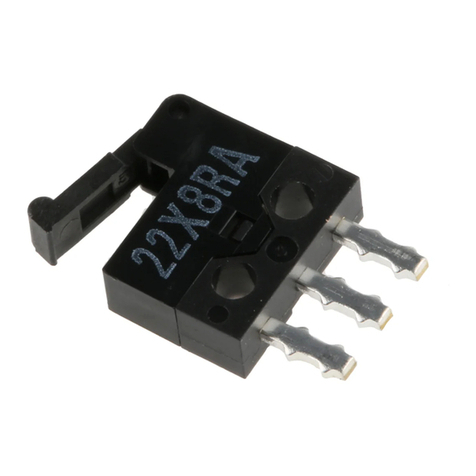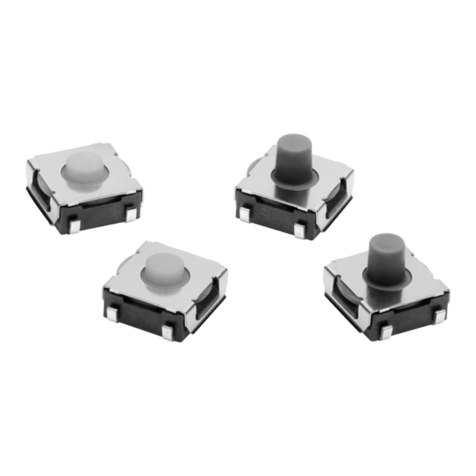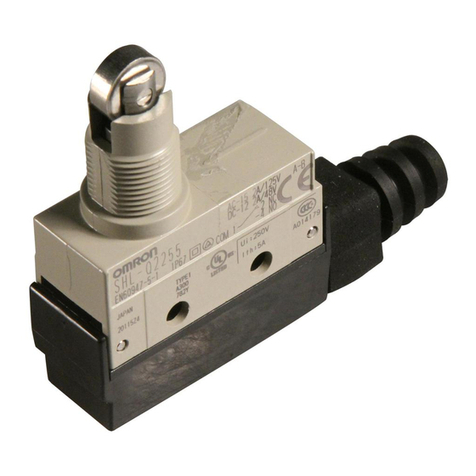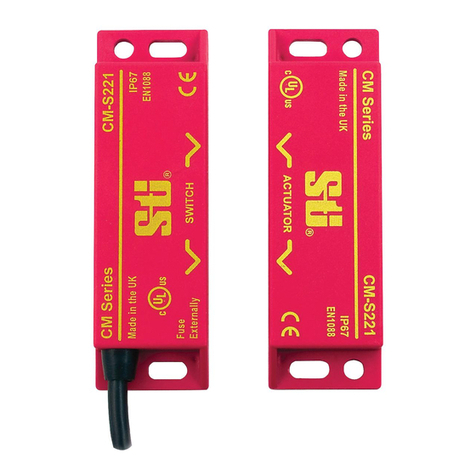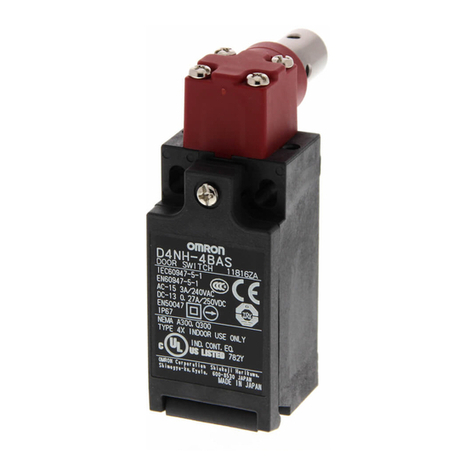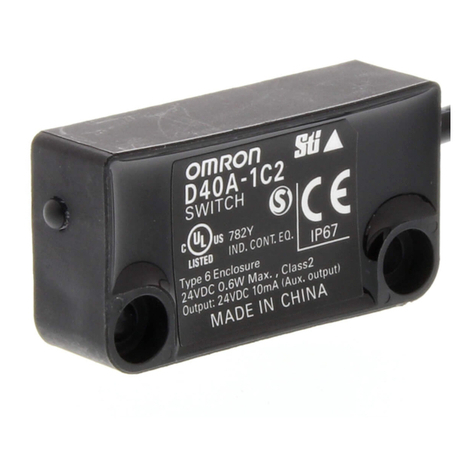
6
D5C
Safety Precautions
Refer to Safety Precautions for All Limit Switches.
Make sure that the antenna does not come into contact
with the human body, otherwise an electric shock may
be received.
Mounting
Do not tighten the nuts with excessive force.
Themaximumpermissibletighteningforceof
each nut with a washer is 29.4 N·m.
Grounding of Antenna and Sensing
Object
<Size of Sensing Object>
•Grounded Object
If the sensing object is the following grounded conductor, its size
will not affect the operation of the D5C. Check for the presence of
insulators sticking to the sensing object or the corrosion of the
sensing object, however, so that the ground resistance will not
exceed 3 kΩ.
Contact with Grounded Conductor
The sensing object is equivalently grounded through
ground resistor R.
R: 3 kΩmax.
The sensing object must not come into contact with the human body
•Non-grounded Object
If the sensing object is the following non-grounded conductor, the
D5Cwilloperateif the capacitancebetweenthesensing object and
the ground is 30 pF or more. The larger the surface area of the
sensingobject is, the higheritscapacitance will be. The shorterthe
distance between the sensing object and the ground is, the higher
the capacitance will be. Furthermore, the capacitance greatly
varies with the ground condition (e.g., dry sand, concrete, or wet
soil).
Contact with Non-grounded Conductor
The sensing object is equivalently grounded through capacitor C.
C: 30 pF min.
<Conditions of Sensing Object>
•The detection of conductors (e.g., iron, stainless steel, aluminum,
and brass objects) poses no particular problem. A conductor
coatedwithpaint cannot be detected, however,becausethere is no
electrical continuity between the antenna and the conductor.
•Non-conductive objects (e.g., plastic, ceramic, glass, and cloth
objects) can be detected by grounding them indirectly.
(Refer to Application Examples on page 1.)
Antenna
<Shape and Extension>
If a metal plate is used as an antenna by connecting it to the built-in
or separated antenna of the D5C, the surface area of the metal plate
must be 200 cm2maximum (Fig. 1). The antenna can be extended,
provided that the total length of the antenna is 1 m maximum (Fig. 2)
and that the bottom ofthe antenna is at least 10 cm (Fig. 3) awayfrom
the ground. Refer to the illustrations below
The D5C may be damaged if the antenna is excessively large or
heavy or if the antenna is used in locations with excessive vibration or
shock. Be sure to check the locations before use.
<Parallel Arrangement>
If there are multiple D5Cs are located in parallel, make sure that the
distance between adjacent antennas is at least 3 cm.
Maintenance
•Make sure that the portion of the antenna that comes into contact
with sensing objects is free of oil, dirt, or rust, or any other insulator.
Otherwise, the D5C will not operate.
•The degree of protection of the D5C is IP67. The D5C cannot be,
however, used in the water or oil.
•Locations with Sprayed Water or Oil
The D5C may malfunction in locations where the D5C is frequently
exposed to sprayed water or oil. Especially, the D5C may
malfunction more frequently if it is exposed to sprayed water-
soluble cutting oil. In such locations, be sure to take appropriate
measures to protect the D5C from oil and water.
Wiring and Connections
•Be sure to wire the D5C correctly according to the color of each
cord. Incorrect wiring may damage the internal components of the
D5C or the D5C may malfunction.
•Amaximumof two models canbeconnectedinseries provided that
100 to 240 V is supplied.DC models cannot be connected in series.
•Besureto supply powertothe D5Cviatheload.If poweris supplied
to the D5C directly, the fuse will blow.
•If there are wire power lines or high-tension lines close to the cable
of the D5C, be sure to wire the cable of the D5C away from power
lines or high-tension lines or lay the cable in an exclusive, shielded
conduit.
•Remove the caution label on the end of the cable before wiring the
cable.
CAUTIONS
Precautions for Correct Use
18.5+0.5
-0 dia.
Mounting Hole Dimension
Grounded
conductor
D5
3 kΩmax.
R
Generally, the conductor will
be detectable if the ambient
humidity is 60% to 70%RH and
the surface area of the conductor
is approximately 300 ×500 mm.
Non-grounded
conductor
30 pF min.
C
Metal plate
200cm
2
max.
Fig. 1
D5C
Fig. 2
D5C 1+ --- 6≤1 m
3
126
45
Fig. 3
D5C
10 cm min.
1 m max.
Ground
D5C 3 cm min. D5C D5
D5C
3 cm min.
D5C
D5C
Load
100 to 240 VAC
Power
source
